Wildfires Keep Getting Worse. Those Fighting Them Can’t Stand Much More. (5 Pics)
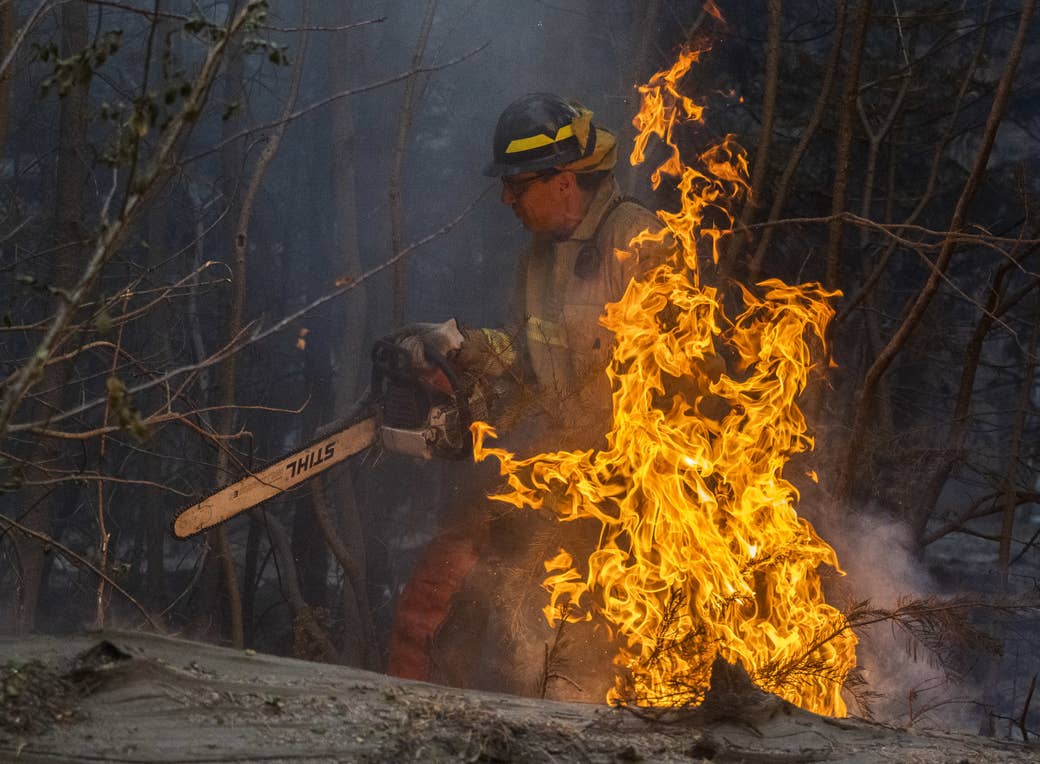
Martin Goldberg has been fighting fires all over California for more than half his life. Last week, he and his crew were at the Caldor Fire outside of Tahoe.
MEYERS, California — As he stood in the ashy evening air along a forest highway near South Lake Tahoe, California, and members of his firefighting crew cut and dragged away flammable pine branches and shrubbery while small fires smoldered, Martin Goldberg’s eyes began to water.
It wasn’t because of the thick, sharp smoke or the bone-dry wind. And it wasn’t because he’d been working for 12 straight days with minimal sleep.
It was because he had started talking about his daughters, and his worry that his job is impacting their lives. It was because this is the second time his family had to flee their home from a raging wildfire while he stayed behind. And it was because, no matter what he does, he can’t stop their fear or protect them from devastation— and it breaks his heart.
“I get anxious when fire conditions are ripe, and [my daughters] feel my anxiety,” he told BuzzFeed News. “Climate change is real. And where I get sickened is that as a parent, as a father, not only have they witnessed and seen it through my eyes, but I can't do anything about it.”
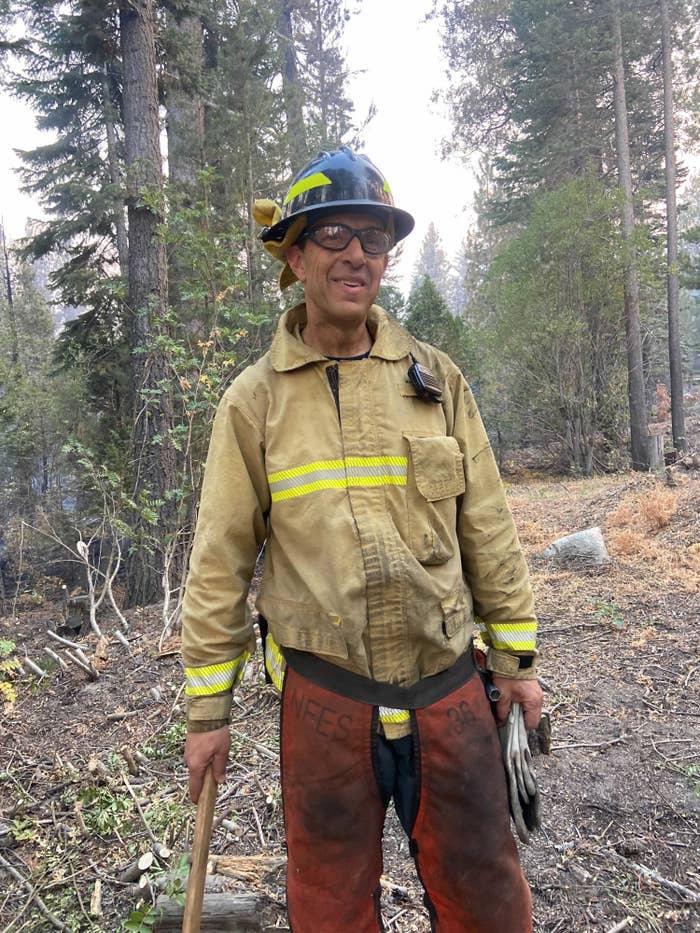
Martin Goldberg
Goldberg, 50, has been fighting fires all over California for half his life — but in the past few years, in part due to the effects of climate change, the job has drastically changed. His small Lake Valley fire department of 25 people has, like many others, been dealing with dwindling resources. Firefighters are worn out and quitting as the blazes continue to get bigger, more unpredictable, and more grueling. Nearly every time Goldberg goes out, wildfires set new records for acreages burned or homes lost. He can no longer bear to see photos of towns rendered to charred piles of ash, having stood in too many of them; he feels overwhelmed by guilt and defeat. Working at night, which used to be the firefighters' time to rest, regroup, and gain ground, has become increasingly difficult and dangerous thanks to increasingly drier air and stronger winds. Extreme events like fire whirls and tornadoes are no longer anomalies. And neither is the likelihood that something serious could happen to him. Since 2018, more than 240 firefighters have died while on duty (that includes 35 who died from COVID-19 in 2020), according to data from the US Fire Administration.
Working in these conditions, when you’re sleep-deprived and running on adrenaline, it’s hard not to think about dying — how it would happen, whether you’d be alone or one of your colleagues might witness it or find you, and what that would do to them, to your loved ones, your kids. In 2013, Goldberg was leading a handcrew team, a crew that fights fires by building a line using tools, on a wildfire near Yarnell, Arizona, when his radio started crackling with frantic requests for help. Soon, other firefighters’ wives started calling him and asking if it was their crew that had died. He soon learned that the blaze, fueled by the wind and dry conditions, had quickly shifted and killed 19 members of the Granite Mountain Hotshots. When he got home, he couldn’t return to work. Some counseling helped, but he was never the same.
“Even to this day, I’ve had the opportunity to run a handcrew and I couldn’t. It felt like my heart was going to be ripped from my chest,” he said. “The fear of death is just the job now. And we just have to do it.”
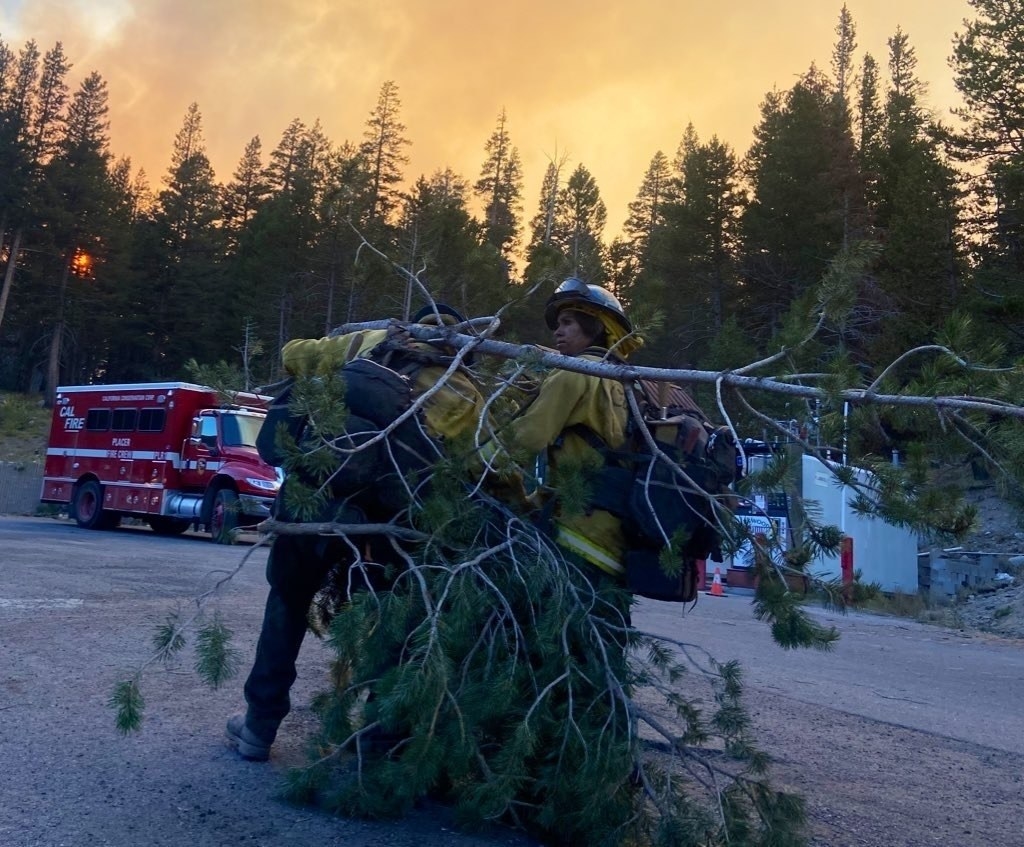
Chantal Lopez, 20, with the California Conservation Corps, helps prepare a line as the Caldor Fire threatened the Kirkwood Ski Resort in Kirkwood, California.
Being exposed to that level of devastation, trauma, danger, human suffering, and fatigue nearly year-round has been bringing many wildland firefighters to their breaking points. And although their macho, staunchly independent, “bury the feelings” culture is slowly shifting and softening, firefighters’ mental and emotional distress is still extremely difficult for many to talk about because it feels like a weakness, as if they’re failing at their job. So they stay silent, widening already painful rifts with their families and friends when they do get home. This constant compounding of exhaustion, stress, guilt, and PTSD has resulted in wildland firefighters having a higher rate of suicides than that of their city counterparts, Nelda St. Clair — who is retired from the Bureau of Land Management wildland fire department’s Critical Incident Stress Management Program and works with the Bureau of Indian Affairs — told BuzzFeed News. St. Clair has been keeping an unofficial tally on firefighter suicides for 13 years because there is still no official data, research, or peer-reviewed evidence.
For the amount of work the wildland firefighting community does, it’s not that big. The US Forest Service employs most wildland firefighters — 10,000 — and the bureaus of Land Management and Indian Affairs have about another 5,500 combined. Thousands more, usually seasonal and temporary employees, work for a smattering of other government and state agencies. And because their small and dwindling ranks keep them on increasingly brutal frontlines for long periods of time, these wildland firefighters die by suicide at a rate 30 times higher than the general US population does, according to St. Clair. From 2015 to 2018, St. Clair cataloged about 17 suicides a year within the community. That number dropped off a bit thanks to increased messaging and awareness, she believes, but she’s seen an uptick since.
“I track the ones I actually respond to, or if I personally knew them, or someone reached out,” St. Clair, who was a wildland firefighter for 40 years and whose husband is still in the field, told BuzzFeed News. “The rates are high considering our small wildland community that gives us strong evidence for causal factors. Everyone knows or knows of someone who has died by suicide.”
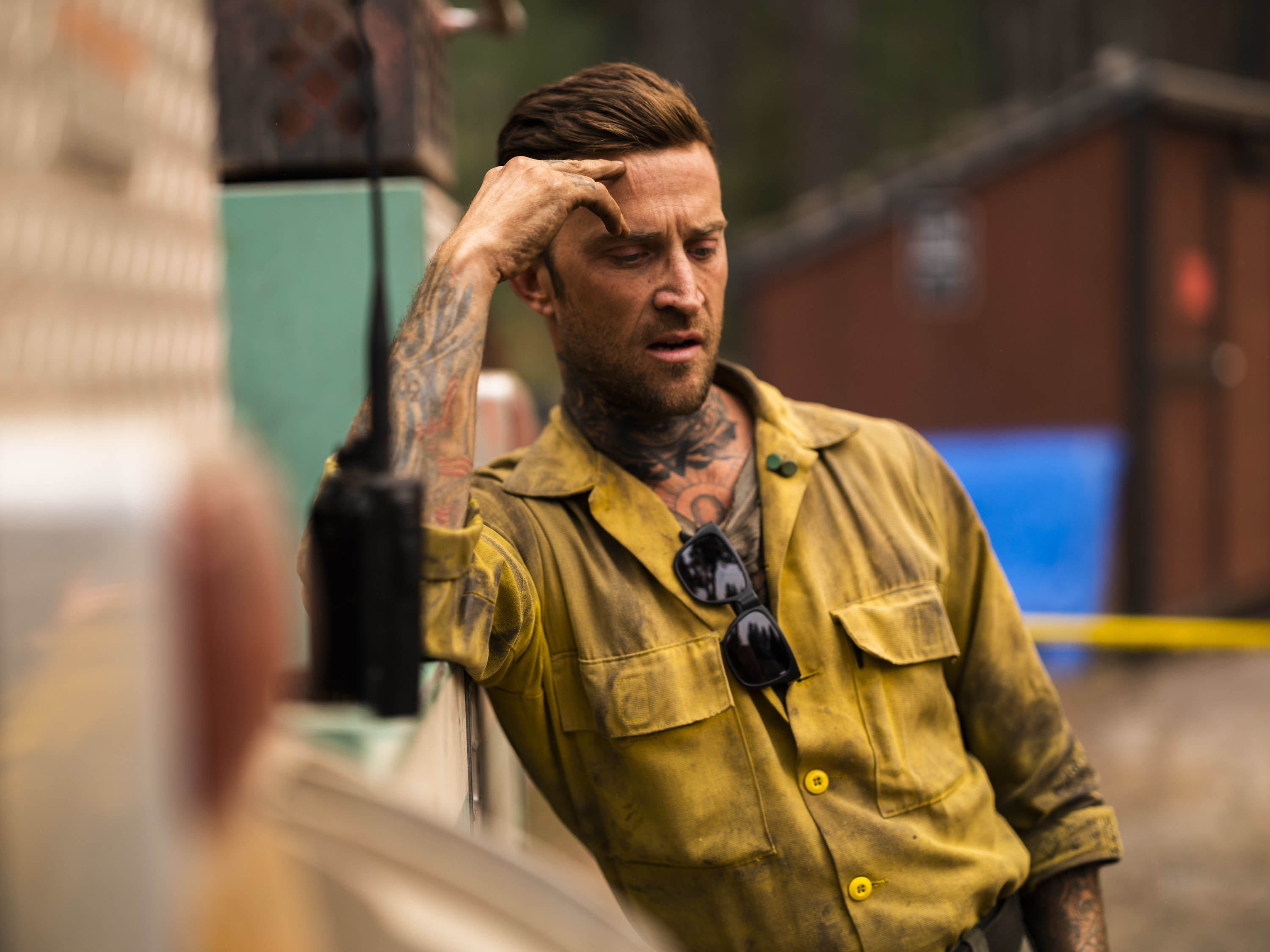
Ben Strahan, the superintendent of the El Dorado Hotshots, on a break from fighting the Caldor Fire on Aug. 31
Returning to reality — the stresses and responsibilities of family life after living in a type of alternate universe akin to a war that lasts for weeks and months at a time — is the number one reason firefighters, both in the wildland and the city, die by suicide, Jeff Dill, a retired fire captain from Illinois who founded the Firefighter Behavioral Health Alliance, told BuzzFeed News. In 2010, Dill became acutely aware that there was a severe dearth of counseling services geared toward first responders like him, and no one was keeping data on their mental health issues. He’s since spoken to 1,610 fire chiefs across the country to confirm hundreds of these deaths, which go back decades. Since 2012, the numbers have nearly doubled; now, around 100 firefighters in the US kill themselves each year, he said, far more than the number of deaths in the field. However, Dill noted that only 65% are reported. Firefighters also have much higher rates of depression, addiction, anxiety, and suicidal thoughts than those of the general public. Those issues are even worse for wildland crews, and they’ve become more vocal over the years about how the hazardous conditions, low pay, inequitable benefits, and a lack of support from the federal government have exacerbated the problem.
Ben Strahan, 39, was one of them. Last November, after another historic, challenging monthslong grind, Strahan, the superintendent of the Eldorado Hotshots, sat on his bed, alone, at his home in the tiny, high forest California community of Garden Valley while his family was out. He tried to look at his life as an outsider. Hotshot crews have some of the most demanding roles of wildland firefighters. They travel all over the US, essentially from May to December, having two days off for every two weeks of work. They average a salary of about $40,000 a year, making much less than those who work for Cal Fire, California’s department of forestry and fire protection. All he wanted was a break, to escape, but instead he felt suffocated by his job, even though it was his dream position. All he could see was this pattern of trying to heal from one fire season while preparing for the next. Over and over, “rinse and repeat,” he said, and he felt paralyzed.
“I was like, fuck, I will be on this hamster wheel for the rest of my life,” he told BuzzFeed News during a break from guarding homes in Meyers from the Caldor fire. “I saw myself doing it again and again, and all a sudden I thought, I could just step off the hamster wheel.”
Strahan was terrified. It was the first time that he’d thought of killing himself a “potential solution” to his stress and feelings of helplessness. He immediately told his wife of 15 years and took some time away, turning to self-care tools that he says have kept him grounded: meditation, exercise, and good nutrition. It’s a lifestyle that very much bucks the image of the “macho,” emotionless firefighter, which he tried to emulate early in his career. That’s what he thought firefighters did, he said.
This grind, this kind of fatigue, is not sustainable. He started to become more candid about his mental health issues on social media and podcasts, and he received hundreds of responses. He realized how many others felt just as burned out but didn't know what to do about it.
“It’s a ticking time bomb,” Strahan said of his job. “If you haven’t actively worked on ways to understand your trauma and those triggers and how to work through them, you’re going to have a hell of a time.”
Wildland firefighters have an employee assistance program, which they can call for advice — but it’s not available to volunteer or seasonal workers, which make up the bulk of the wildland force, according to St. Clair, when they’re off-season. Its biggest problem, though, she said, is that it lacks trauma-informed care.
But Strahan and many others are insulted that in the government’s eyes, they are not classified as firefighters. His official title is “forestry technician,” a classification that advocates say stunts their wages and benefits. It makes him and others feel less than their counterparts. Many workers live with guilt for sacrificing themselves, their mental and physical health, and time with their family for the job; as a result, many of them are leaving the force. These same thoughts have been detailed in a slew of farewell and resignation letters, as well as pleas to Congress for things like more and better mental health programs, increased hazard and overtime pay, and more rest.
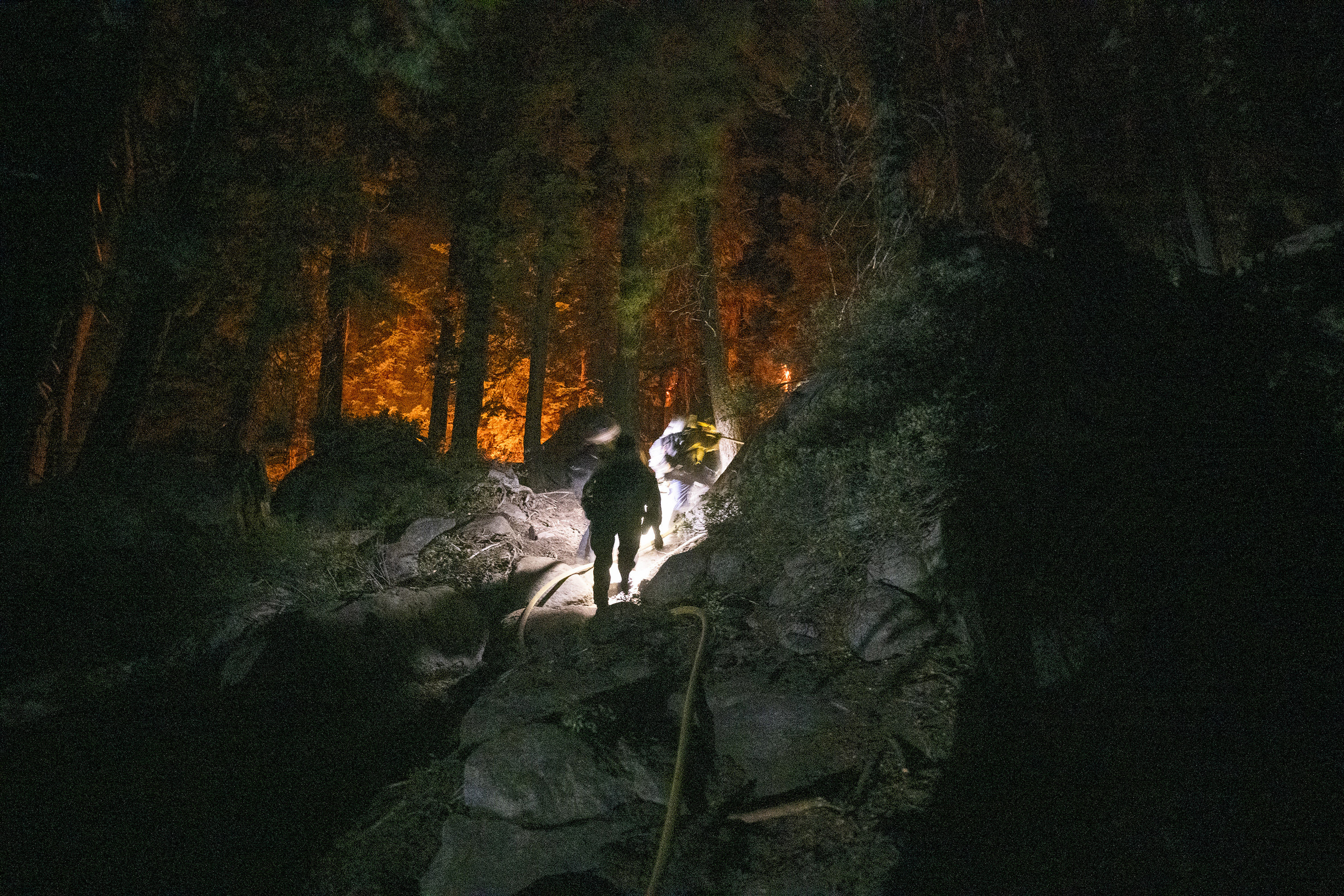
The El Dorado Hotshots forest service crew worked to remove trees from in front of the fireline as the Caldor Fire blaze moved through the mountains near South Lake Tahoe in the Tahoe National Forest on Sept. 1.
But as draining and hard as the work can be, many of the firefighters can’t imagine doing anything else. It’s a part of who they are. The community and camaraderie are “indescribable,” and it’s with their crew that they feel most seen, comfortable, and understood.
“I love it more than anything,” Tinaya Monroe, a 27-year-old federal contract firefighter from the Blackfeet Indian Reservation in Browning, Montana, told BuzzFeed News after arriving at the Caldor Fire straight from another one — her 40th straight day of work. Well, she added, laughing, “It’s a love-hate thing.”
Even though all the fatigue and being on the go “catches up” with her, she wants more experience so she can one day become an engine boss. She said she tried having a regular office job but couldn’t handle the monotony. On the line, it’s always something different, something adventurous.
“No matter what, at the end of the day, there’s no other place I’d rather be but here,” she said. “Instead of being on the reservation. Here, I forget about the real world.”
Some agencies have made strides in supporting firefighters, helping them transition between their two realities and cope with what they’ve endured. Cal Fire, for example, now has about 20 full-time staff members whose only job is to help provide resources to employees with mental health issues. In his little department near Lake Tahoe, Goldberg helped create the Critical Incident Stress Management Program. He also discovered Ashtanga yoga and now teaches classes in the park, often with his colleagues as students. He still sometimes feels nervous and sensitive about sharing that part of himself with his crew, but he said the more he opens up, the more he’s made connections with people he didn’t realize had similar thoughts to his.
His daughters have noticed a change too. Talking on speakerphone from their grandmother’s house in Denver, where they’ve been since evacuating the Caldor Fire more than a week ago, Corinne, 17, and Sarah Goldberg, 15, said their dad has gotten a lot better at taking care of himself. They remembered how much of an impact the Yarnell Fire tragedy had on him and recalled him being open about his need to talk to someone. They never really got used to “the fear that he will leave” whenever dry winds kicked up, or the anxiety when he was out of service for a long time, when they would stare intently at their mom’s phone and wait for his tracking dot to move. And while it made them sad knowing how dangerous his job is, they understood how much responsibility he had keeping his crew safe, how much that weighed on him, and they feel lucky to have him as a dad.
“We send him emojis when we chat, and we know when it’s been really hard for him. Seeing the forest and the beauty burn has been really hard on him,” Sarah said. “But he’s been upbeat. He’s feeling better now. He saved a lot of homes.”


